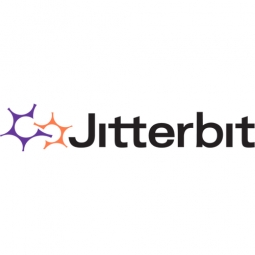Intelliflo:从 Netsuite 到 Office 365 到 Splunk 到 SQL Server 到 GoToWebinar 到 T2A 到 Salesforce 到 Twitter 到 Kic>box 的成功案例

公司规模
Large Corporate
地区
- Europe
国家
- United Kingdom
产品
- Jitterbit Harmony
- NetSuite
- Salesforce
- Office 365
- SQL Server
技术栈
- Cloud Integration
- CRM
- Finance Systems
实施规模
- Enterprise-wide Deployment
影响指标
- Productivity Improvements
- Cost Savings
技术
- 平台即服务 (PaaS) - 连接平台
- 应用基础设施与中间件 - 数据交换与集成
适用行业
- 金融与保险
适用功能
- 商业运营
用例
- 过程控制与优化
- 供应链可见性(SCV)
服务
- 系统集成
- 云规划/设计/实施服务
关于客户
Intelliflo 是英国金融业领先的实践管理软件提供商。该公司的客户使用 Intelliflo 的产品来管理英国 800 多万人的财务。2018 年 6 月,该公司被全球投资管理公司 Invesco 收购。收购之前,Intelliflo 由 HgCapital 所有,HgCapital 是一家领先的欧洲 B2B 科技公司私募股权投资者。该公司面临着业务数据流方面的挑战,有价值的数据通常隐藏在本地和云端的孤岛中。这阻碍了创新并阻碍了业务计划。
挑战
Intelliflo 是英国金融业领先的实践管理软件提供商,它面临着业务数据流效率低下的挑战。业务计划常常因缺乏底层 IT 开发流程来支持而受阻。有价值的数据虽然可用,但通常隐藏在本地和云中的孤岛中。技术阻碍了创新,而不是促进了创新。该公司的财务数据在 NetSuite 中,而客户数据在 Salesforce 中,两者中都有重复数据。重新输入数据很容易出错,客户需要访问不同的应用程序才能找到所需的信息。新的 SaaS 应用程序并没有增强业务流程或支持增长战略。
解决方案
解决方案是使用 Jitterbit Harmony 创建企业集成平台。Jitterbit Harmony 是一款功能齐全的云集成工具,可将数据、应用程序和设备整合在一起,无需编码。使用 Harmony,像 Intelliflo 这样的组织可以快速轻松地编排、自动化和集成各种应用程序、业务流程和数据视图。Jitterbit Harmony 可轻松集成您的系统,让您专注于自己最擅长的领域。该公司现在可以每三个小时自动协调一次他们的 CRM 和财务系统,这让团队放心,因为集成工作正常,数据干净。Intelliflo 现在有一个集成层,可确保在运营其业务的系统中有足够的数据流。
运营影响
数量效益

Case Study missing?
Start adding your own!
Register with your work email and create a new case study profile for your business.
相关案例.

Case Study
Real-time In-vehicle Monitoring
The telematic solution provides this vital premium-adjusting information. The solution also helps detect and deter vehicle or trailer theft – as soon as a theft occurs, monitoring personnel can alert the appropriate authorities, providing an exact location.“With more and more insurance companies and major fleet operators interested in monitoring driver behaviour on the grounds of road safety, efficient logistics and costs, the market for this type of device and associated e-business services is growing rapidly within Italy and the rest of Europe,” says Franco.“The insurance companies are especially interested in the pay-per-use and pay-as-you-drive applications while other organisations employ the technology for road user charging.”“One million vehicles in Italy currently carry such devices and forecasts indicate that the European market will increase tenfold by 2014.However, for our technology to work effectively, we needed a highly reliable wireless data network to carry the information between the vehicles and monitoring stations.”

Case Study
Safety First with Folksam
The competitiveness of the car insurance market is driving UBI growth as a means for insurance companies to differentiate their customer propositions as well as improving operational efficiency. An insurance model - usage-based insurance ("UBI") - offers possibilities for insurers to do more efficient market segmentation and accurate risk assessment and pricing. Insurers require an IoT solution for the purpose of data collection and performance analysis

Case Study
Smooth Transition to Energy Savings
The building was equipped with four end-of-life Trane water cooled chillers, located in the basement. Johnson Controls installed four York water cooled centrifugal chillers with unit mounted variable speed drives and a total installed cooling capacity of 6,8 MW. Each chiller has a capacity of 1,6 MW (variable to 1.9MW depending upon condenser water temperatures). Johnson Controls needed to design the equipment in such way that it would fit the dimensional constraints of the existing plant area and plant access route but also the specific performance requirements of the client. Morgan Stanley required the chiller plant to match the building load profile, turn down to match the low load requirement when needed and provide an improvement in the Energy Efficiency Ratio across the entire operating range. Other requirements were a reduction in the chiller noise level to improve the working environment in the plant room and a wide operating envelope coupled with intelligent controls to allow possible variation in both flow rate and temperature. The latter was needed to leverage increased capacity from a reduced number of machines during the different installation phases and allow future enhancement to a variable primary flow system.

Case Study
Automated Pallet Labeling Solution for SPR Packaging
SPR Packaging, an American supplier of packaging solutions, was in search of an automated pallet labeling solution that could meet their immediate and future needs. They aimed to equip their lines with automatic printer applicators, but also required a solution that could interface with their accounting software. The challenge was to find a system that could read a 2D code on pallets at the stretch wrapper, track the pallet, and flag any pallets with unread barcodes for inspection. The pallets could be single or double stacked, and the system needed to be able to differentiate between the two. SPR Packaging sought a system integrator with extensive experience in advanced printing and tracking solutions to provide a complete traceability system.

Case Study
Transforming insurance pricing while improving driver safety
The Internet of Things (IoT) is revolutionizing the car insurance industry on a scale not seen since the introduction of the car itself. For decades, premiums have been calculated using proxy-based risk assessment models and historical data. Today, a growing number of innovative companies such as Quebec-based Industrielle Alliance are moving to usage-based insurance (UBI) models, driven by the advancement of telematics technologies and smart tracking devices.
Case Study
Enhancing Security and Compliance in Remitly's Global Money Transfer Service with Fastly
Remitly, an online remittance service, was faced with the challenge of securing its proprietary global transfer network. The company needed a security solution that could meet PCI requirements and protect customers' sensitive transactions through its mobile application. The solution had to be capable of defending against new and emerging attack types without impacting performance. Remitly also had to deal with irregular traffic patterns, such as a sudden spike in account transfers from a small network segment on the Pacific coastline of South America. The company needed to determine in real time whether such traffic indicated an attack or valid requests. A traditional web application firewall (WAF) would not be able to distinguish this traffic, potentially leading to customer frustration if the IP was blacklisted.






